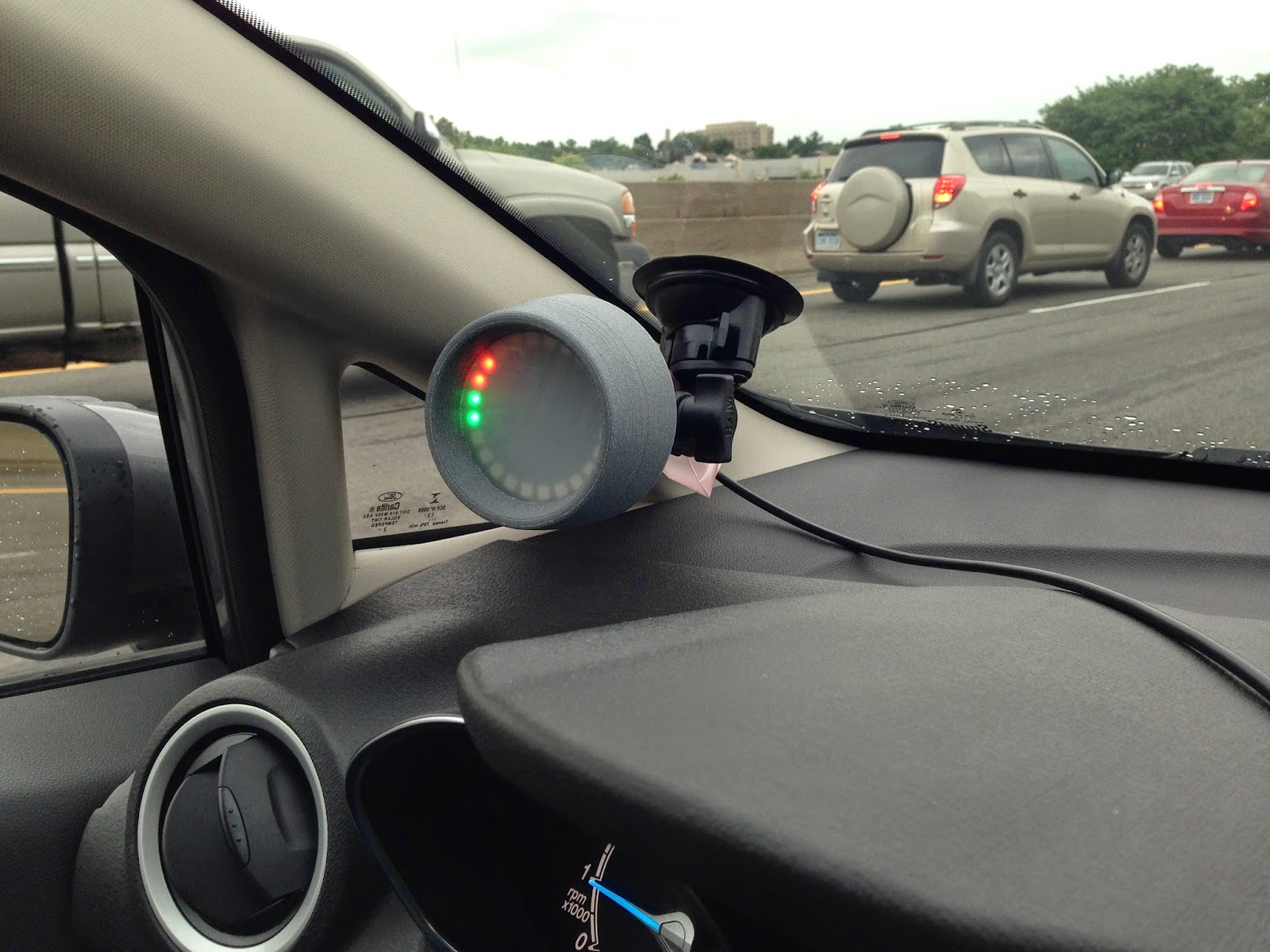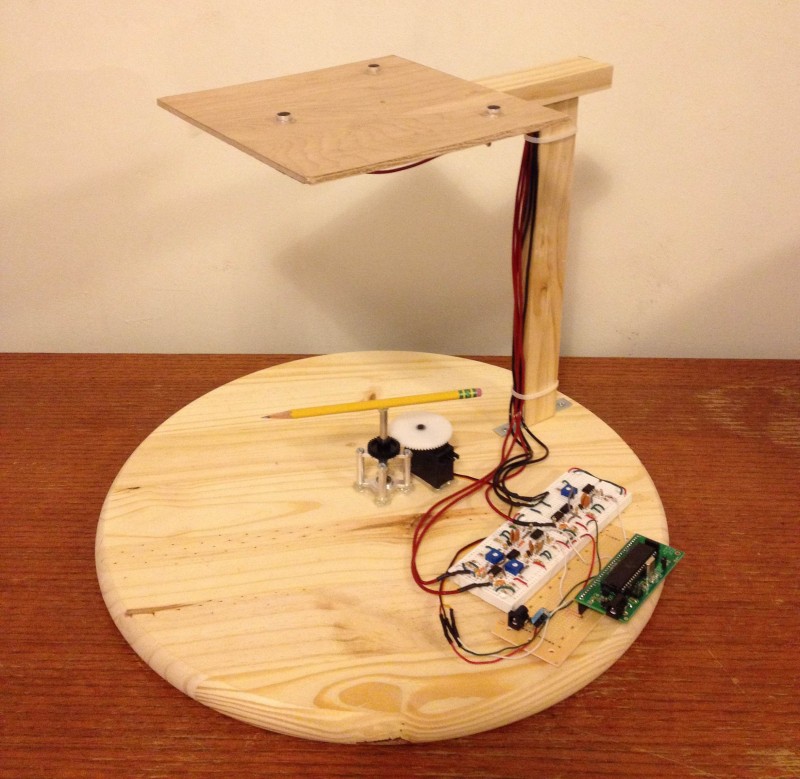blueShift – An OpenXC LED Tachometer
Inside the custom 3D printed housing Pete Mills built a LED Tachometer which gets engine data from a Open XC ODB2 module via bluetooth. It is looking for RPM and headlight status data from the module to update the user display. The headlamp status is used to dim the LED display when the headlights are automatically turned on by the car. “An Arduino, some addressable LED’s, a bluetooth module,






